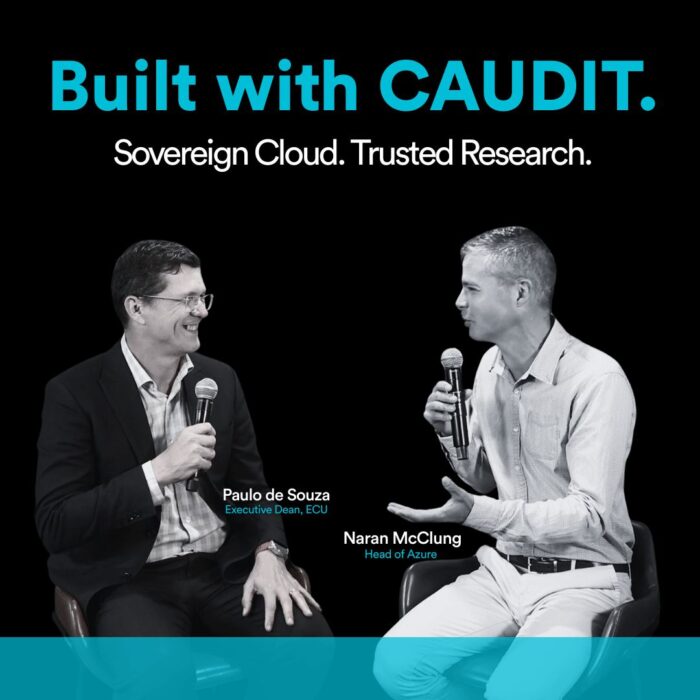Secrets of a Smooth Azure Migration (with Less Stress and More Savings)

You’d be hard-pressed to find an IT manager who hasn’t been tasked with “get us to the cloud” in the last few years. There’s good reason for it. But just because Azure is the logical next step doesn’t make migration a walk in the park. Between outdated on-prem servers, legacy databases, and a never-ending parade of “critical” apps, the risk of downtime or cost blowouts is very real.
Sound familiar? That’s where Azure Migrate comes in. This guide shows you exactly how to use Azure Migrate and the broader Azure ecosystem to pull off a smart, headache-free cloud migration. You’ll walk away knowing:
- What Azure Migrate actually does (and doesn’t do),
- How to prep your environment before taking the leap,
- Step-by-step migration for servers and databases,
- How to keep downtime to a minimum and costs in check,
- Tools worth knowing so you don’t get caught flat-footed.
Already convinced? Book your no-obligation Azure consultation today and get your migration started on the right foot.
What Is Azure Migrate? Your Swiss Army Knife for Cloud Moves.
Azure Migrate is Microsoft’s end-to-end hub for discovering, assessing, and migrating on-premises infrastructure, databases and workloads into Microsoft Azure.
What does that mean in practice?
- Discovery and Assessment
Automatically scans your environment to catalogue every server, VM, app, and database you forgot you had.
- Migration Tools
Centralises tools for server, database, and web app migrations. No more playing vendor alphabet soup.
- Cost Estimation
Provides cost projections so you won’t be floored by your first Azure bill.
- Dependency Mapping
Reveals the hidden “if-you-touch-this-that-breaks” web across your stack BEFORE you migrate.
Bottom line: It’s the launchpad for getting from where you are now to running in Azure confidently.
Why Use Azure Migrate?
- Unified view of migration projects
- Supports everything from Windows/Linux servers to SQL Server, MySQL, PostgreSQL, and more
- Integrates with Azure Database Migration Service, Azure Site Recovery, and other migration tools
- Automation means less grunt work
If you like checklists, Azure Migrate will be your best friend.
Step-by-Step Guide to Azure Migration.
It’s tempting to treat cloud migration like unplug-then-replug. Don’t. Here’s a process that actually works:
1. Strategy: Define the Why and What
Start with business objectives, not just tech.
- What apps need to run 24/7?
- What compliance requirements are non-negotiable?
- Where can you afford a break in service (and where can’t you)?
This is where consulting with seasoned Azure experts pays off, saving time and rework.
2. Planning: Map Dependencies and Risks
No two workloads are alike. Assess:
- What needs to move together?
- What can migrate independently?
- Are licences and support agreements cloud-ready?
Use Azure Migrate’s built-in dependency visualisation to avoid missing hidden links.
Pro tip: Segment your migration into “waves.” Don’t try to move everything at once.
3. Assess and Discover
Install the Azure Migrate appliance to auto-discover:
- Physical and virtual servers (VMware/Hyper-V)
- Databases (SQL Server, MySQL, PostgreSQL, Oracle, and more)
- Web apps and services
This step saves massive headaches down the line. You’ll get a full inventory, performance data, compatibility checks, and a clear view of required changes.
4. Prepare Your Azure Environment (Readiness)
Before moving anything:
- Set up your Azure subscription and resource groups
- Configure your Azure Landing Zone (security, networking, IAM, policies)
- Check compliance requirements (PCI, ISO, etc.)
If this is reading like Greek, it might be time for that consultation.
5. Migration Execution (Adoption Phase)
Use Azure Migrate’s integrated tools to migrate workloads:
- Servers: Azure Migrate Server Migration or Azure Site Recovery for live migrations with minimal downtime
- Databases: Azure Database Migration Service (more on this below)
- Web Apps: Azure App Service Migration Assistant
Each tool can run test migrations so you can validate cut-over before impacting users.
6. Post-migration Governance & Optimisation
- Set up monitoring, alerts and regular OS updates
- Use Azure Cost Management to track usage
- Apply tagging to resources for cost allocation
Welcome to the cloud! Now start optimising.
Assess Before You Move – Or Pay the Price Later.
9 times out of 10, poor planning is the difference between a seamless migration and an all-hands-on-deck “incident”. Here’s how to assess your environment so you’re not flying blind.
Use Azure Migrate for Full Discovery
- Automatically inventory your assets: No more Excel sheets or manual checklists.
- Performance analysis: See what’s underutilised (downsizing now = cost savings later).
- Application mapping: See which apps talk to each other so you don’t break mission-critical workflows.
- Cloud readiness checks: Get an instant report on what’s cloud-ready, what needs re-platforming, and what should be retired entirely.
Budgeting & Cost Insights
- Use Azure Migrate’s estimation tools to forecast cloud costs before the first server moves.
- Tap into Azure Cost Management for granular reporting and optimisation suggestions.
Pro tip: Set up budgets and alerts before you migrate so you’re not caught off guard.
Database Migration Tools You Should Actually Use.
Most failed migrations come down to database complexity. Azure’s stack takes away much of the headache:
File This Under “Must-Have” Tools
- Azure Database Migration Service (DMS): The heavy lifter for moving SQL, MySQL, PostgreSQL, Oracle, and other databases to Azure.
- Supports offline and online (minimal downtime) migrations
- Handles sizing, compatibility, indexing and more so you can focus on the end result
- Automates schema conversion and data movement
- Data Migration Assistant (DMA): Checks compatibility, flags potential issues, and creates remediation plans before you click “migrate”.
- Azure Migrate Database Assessment: Embedded in Azure Migrate, runs readiness checks and offers right-sizing recommendations.
Don’t forget:
- Test migrations with a subset of data before the big move
- Back up EVERYTHING
- Engage both DBAs and app owners early
Minimise Downtime (and Maximise Sanity).
Downtime kills cloud projects. Here’s how to keep it close to zero.
Plan for Parallel (not Serial) Workloads
- Use live replication with Azure Site Recovery (ASR) where possible—for a simple switch-over without breaking the app.
- Leverage test migrations to rehearse cut-overs.
Schedule Wisely
- Migrate outside of peak business hours
- Communicate clearly with business units about freeze periods
Automation Is Your Friend
- Azure tools support scripted and automated failovers
- Azure Migrate enables repeatable runs for multi-wave migrations
Real Talk on Support
- Partner with experienced Azure-certified consultants who monitor and triage issues in real time. For example, Macquarie Cloud Services provides 24×7 support with direct access to Microsoft Premier queues (which means your support tickets don’t disappear into the void).
How to Keep Migration Costs (and Surprises) Down.
The cloud’s only “cheap” if you run it right. Here’s how to keep things lean:
- Use Azure Migrate’s cost estimation to right-size resources (plus, consider converting underutilised VMs into Azure’s reserved instances for long-term savings).
- Implement tagging early for project-level cost allocation.
- Regularly trim or decommission unused resources.
- Use spot VMs for non-critical workloads. They’re not just for dev/test!
Case Study: One SaaS company shaved 30% off their Azure bill by following cost optimisation tips from Azure Cost Management.
Your Action Plan for a Seamless Azure Migration.
You don’t get a second shot at a cloud move. The secret to success? Start with a solid assessment, use the right tools, automate where possible, and don’t be afraid to call in expert backup.
Want real-world insight for YOUR Azure migration? Book a free, no-pressure Azure consultation with our certified team. We’ll show you real tactics, real examples, and transparent costs for the move you’re actually planning.
Stop guessing. Start migrating—with confidence.



